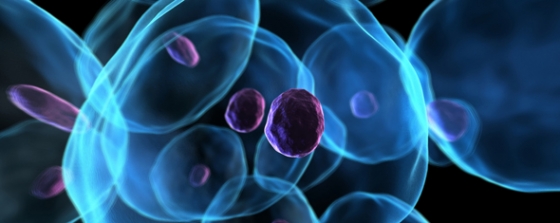TRAIL is a natural antitumor protein that suppresses tumor development during immune surveillance, the immune system’s process of patrolling the body for cancer cells. This process is lost during cancer progression, which leads to uncontrolled growth and spread of tumors.
The ability of TRAIL to initiate cell death selectively in cancer cells has led to ongoing clinical trials with artificially-created TRAIL or antibody proteins that mimic its action. Use of the TRAIL protein as a drug has shown that it is safe, but there have been some issues, including stability of the protein, cost of the drug, and the ability of the drug to distribute throughout the body and get into tumors, especially in the brain.
“The TRAIL pathway is a powerful way to suppress tumors but current approaches have limitations that we have been trying to overcome to unleash an effective and selective cancer therapy,” said Dr. Wafik El-Deiry, professor of medicine and chief of the hematology/oncology division, Penn State College of Medicine. “The TRAIL biochemical cell death pathway naturally lends itself as a drug target to restore anti-tumor immunity.”
Researchers have identified a compound called TRAIL-inducing Compound 10 (TIC10) as a potential solution. TIC10 stimulates the tumor suppression capabilities of TRAIL in both normal and tumor tissues, including in the brain, and induces tumor cell death in mice. They report their findings in the journal Science Translational Medicine.
TIC10 is a small molecule. This organic compound binds to a protein and alters what the protein does.
Stimulation of TRAIL protein is sustained in both tumor and normal cells, with the normal cells contributing to the TIC10-induced cancer cell death through a bystander effect. It is effective in cancer cell samples and cell lines resistant to conventional therapies.
“I was surprised and impressed that we were able to do this,” El-Deiry said. “Using a small molecule to significantly boost and overcome limitations of the TRAIL pathway appears to be a promising way to address difficult to treat cancers using a safe mechanism already used in those with a normal effective immune system. This candidate new drug, a first-in-its-class, shows activity against a broad range of tumor types in mice and appears safe at this stage.”
New treatments are needed for advanced cancer, as more than half a million people in the United States will die of cancer in 2013.
“We have enough preclinical information to support the rationale for testing this new drug in the clinic,” El-Deiry said.
TIC10 seems to be nontoxic to normal cells or mice even at doses 10 times higher that an observed therapeutic dose, however more research needs to be completed to satisfy FDA requirements prior to initiation of clinical testing.
Other researchers are Joshua E. Allen, David T. Dicker, Akshal S. Patel, Nathan G. Dolloff, Kimberly A. Scata, Wenge Wang, all of Penn State Hershey Cancer Institute; Gabriel Krigsfeld, Patrick A. Mayes, Luv Patel, University of Pennsylvania School of Medicine; Evangelos Messaris, Department of Surgery, Penn State College Medicine; Jun-Ying Zhou and Gen Sheng Wu, Wayne State University School of Medicine.
This study was funded by the American Cancer Society, Penn State Hershey Cancer Institute and the National Institutes of Health.
Located on the campus of Penn State Milton S. Hershey Medical Center in Hershey, Pa., Penn State College of Medicine boasts a portfolio of more than $106 million in funded research. Projects range from the development of artificial organs and advanced diagnostics to groundbreaking cancer treatments and understanding the fundamental causes of disease. Enrolling its first students in 1967, the College of Medicine has more than 1,600 students and trainees in medicine, nursing, the health professions and biomedical research on its campus.














comments
RSS feed for comments to this post